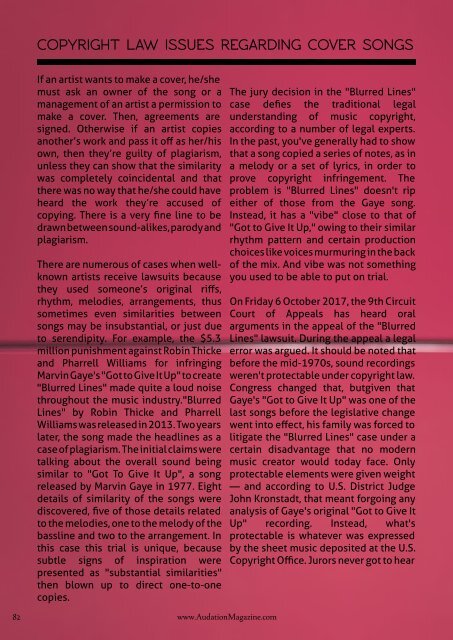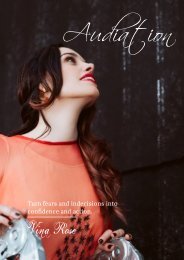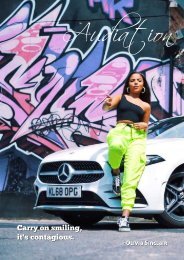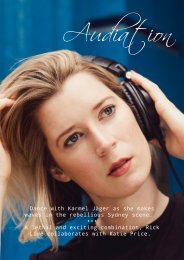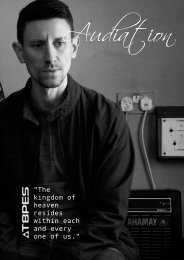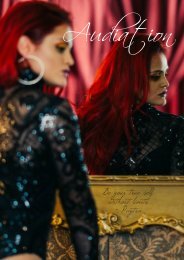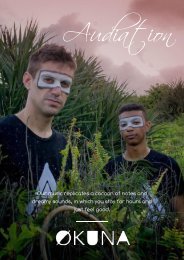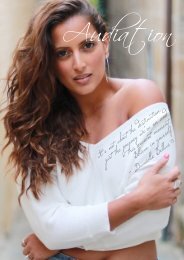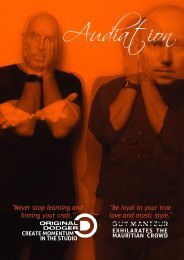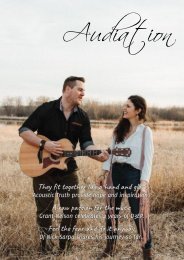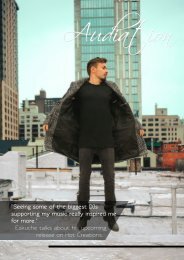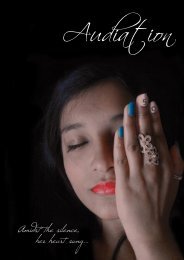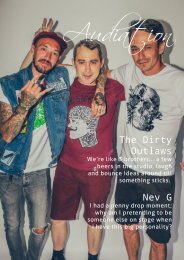AM044
February 2018 Issue 44 features a review of Walshy Fire's takeover event in Mauritius, albums to look forward to in 2018 and music from Cianna Blaze, Royal Flush & Original Dodger.
February 2018 Issue 44 features a review of Walshy Fire's takeover event in Mauritius, albums to look forward to in 2018 and music from Cianna Blaze, Royal Flush & Original Dodger.
You also want an ePaper? Increase the reach of your titles
YUMPU automatically turns print PDFs into web optimized ePapers that Google loves.
COPYRIGHT LAW ISSUES REGARDING COVER SONGS<br />
If an artist wants to make a cover, he/she<br />
must ask an owner of the song or a<br />
management of an artist a permission to<br />
make a cover. Then, agreements are<br />
signed. Otherwise if an artist copies<br />
another’s work and pass it off as her/his<br />
own, then they’re guilty of plagiarism,<br />
unless they can show that the similarity<br />
was completely coincidental and that<br />
there was no way that he/she could have<br />
heard the work they’re accused of<br />
copying. There is a very fine line to be<br />
drawn between sound-alikes, parody and<br />
plagiarism.<br />
There are numerous of cases when wellknown<br />
artists receive lawsuits because<br />
they used someone’s original riffs,<br />
rhythm, melodies, arrangements, thus<br />
sometimes even similarities between<br />
songs may be insubstantial, or just due<br />
to serendipity. For example, the $5.3<br />
million punishment against Robin Thicke<br />
and Pharrell Williams for infringing<br />
Marvin Gaye's "Got to Give It Up" to create<br />
"Blurred Lines" made quite a loud noise<br />
throughout the music industry."Blurred<br />
Lines" by Robin Thicke and Pharrell<br />
Williams was released in 2013. Two years<br />
later, the song made the headlines as a<br />
case of plagiarism. The initial claims were<br />
talking about the overall sound being<br />
similar to "Got To Give It Up", a song<br />
released by Marvin Gaye in 1977. Eight<br />
details of similarity of the songs were<br />
discovered, five of those details related<br />
to the melodies, one to the melody of the<br />
bassline and two to the arrangement. In<br />
this case this trial is unique, because<br />
subtle signs of inspiration were<br />
presented as "substantial similarities"<br />
then blown up to direct one-to-one<br />
copies.<br />
82 www.AudationMagazine.com<br />
The jury decision in the "Blurred Lines"<br />
case defies the traditional legal<br />
understanding of music copyright,<br />
according to a number of legal experts.<br />
In the past, you've generally had to show<br />
that a song copied a series of notes, as in<br />
a melody or a set of lyrics, in order to<br />
prove copyright infringement. The<br />
problem is "Blurred Lines" doesn't rip<br />
either of those from the Gaye song.<br />
Instead, it has a "vibe" close to that of<br />
"Got to Give It Up," owing to their similar<br />
rhythm pattern and certain production<br />
choices like voices murmuring in the back<br />
of the mix. And vibe was not something<br />
you used to be able to put on trial.<br />
On Friday 6 October 2017, the 9th Circuit<br />
Court of Appeals has heard oral<br />
arguments in the appeal of the "Blurred<br />
Lines" lawsuit. During the appeal a legal<br />
error was argued. It should be noted that<br />
before the mid-1970s, sound recordings<br />
weren't protectable under copyright law.<br />
Congress changed that, butgiven that<br />
Gaye's "Got to Give It Up" was one of the<br />
last songs before the legislative change<br />
went into effect, his family was forced to<br />
litigate the "Blurred Lines" case under a<br />
certain disadvantage that no modern<br />
music creator would today face. Only<br />
protectable elements were given weight<br />
— and according to U.S. District Judge<br />
John Kronstadt, that meant forgoing any<br />
analysis of Gaye's original "Got to Give It<br />
Up" recording. Instead, what's<br />
protectable is whatever was expressed<br />
by the sheet music deposited at the U.S.<br />
Copyright Office. Jurors never got to hear


